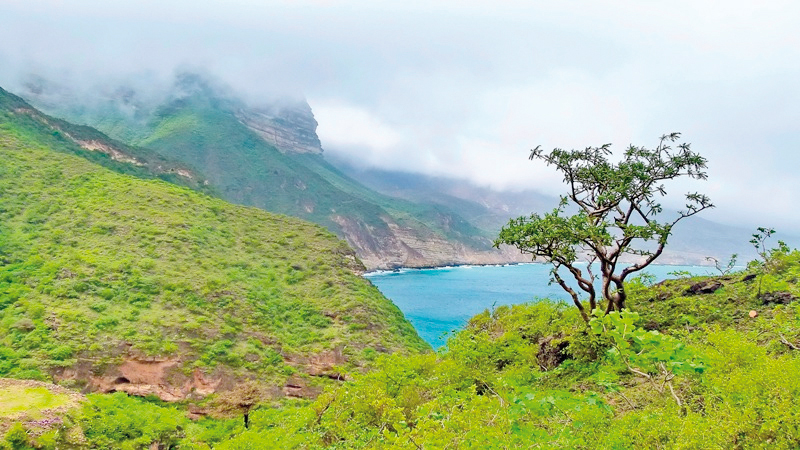

THE Wilayat of Rakhyout is located in the western part of Dhofar Governorate. It borders Al Mughsail beach in the east, Wilayat of Dhalkout in the west, to the north by Haruib (Wilayat of Al Mazyouna), and Arabian Sea to the south.
It is a popular destination frequented by many tourists, due to its historical legacy, geographic and environmental diversity. It is a corner for lovers of natural beauty and a popular destination for campers who go hiking, mountain climbing, and exploring the desert.




Throughout history, citizens of Rakhyout are engaged in many traditional crafts, including pottery, fishing, agriculture, leather tanning, extraction of frankincense and clay houses building.
Additionally, Rakhyout is known for a number of traditional arts like Huboot Azamil, Al Baraa, Atabel (the Drum), and Nana. The wilayat has long been known as an active commercial centre connected to many commercial destinations and foreign markets such as Aden, India, coasts of Africa, and Basra, in addition to local markets like Bandar Salalah, Mirbat, Sedh and Bandar Al Afiyah.
The Wilayat of Rakhyout is one of the most important tourist attractions in the Sultanate and a destination for many tourists both inside and outside the Sultanate.
Some of the fascinating places in the wilayat for instance are Al Fazaeeh beach which extends over 5 kilometres. There are several caves such as Sherot, Akharat, Hartom and Shaat, Ain Rob that extends for more than 10 kilometres to the north where there is an exit in Qaddon area.
One of the historic landmarks in the wilayat is Rakhyout fort, which was restored in 2013. Additionally, there is the ancient Rakhiot Mosque, one of the oldest mosques in the Sultanate. The restoration work is still undergoing after it was first restored in 1913.
There is also a picturesque coastal area called Kharfout located west of the coast of Rakhiot and Al Hotah which has a shrine and mosque that are frequented by European tourists.
Rakhyout is blessed with comprehensive development in all levels. There is an integrated infrastructure that results in significant transformation in all aspects of life.
Presently, there is the walis office, hospital, which provides primary services in the healthcare and maternity services, Shahab Asaab’s health centre, eight educational schools, Omani Women Association, and a training centre for the artisans.
Oman Observer is now on the WhatsApp channel. Click here



